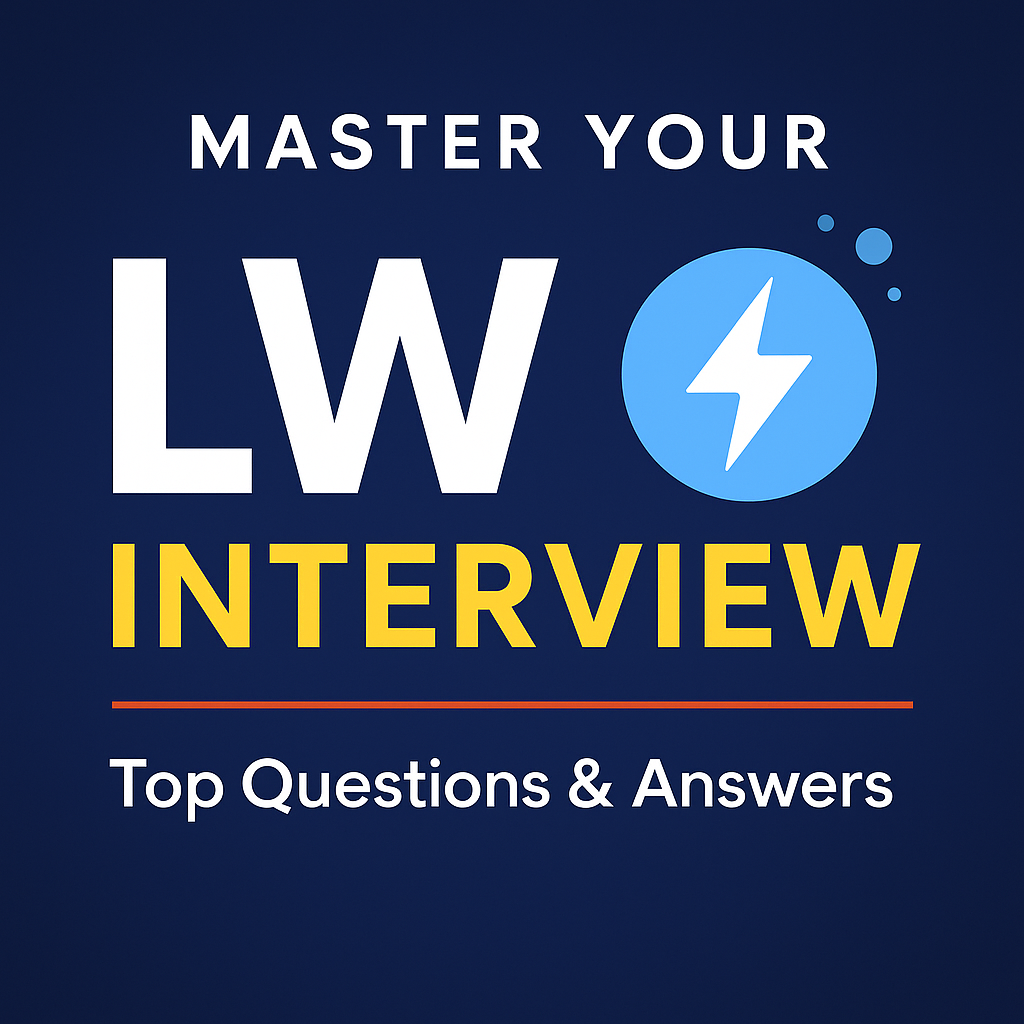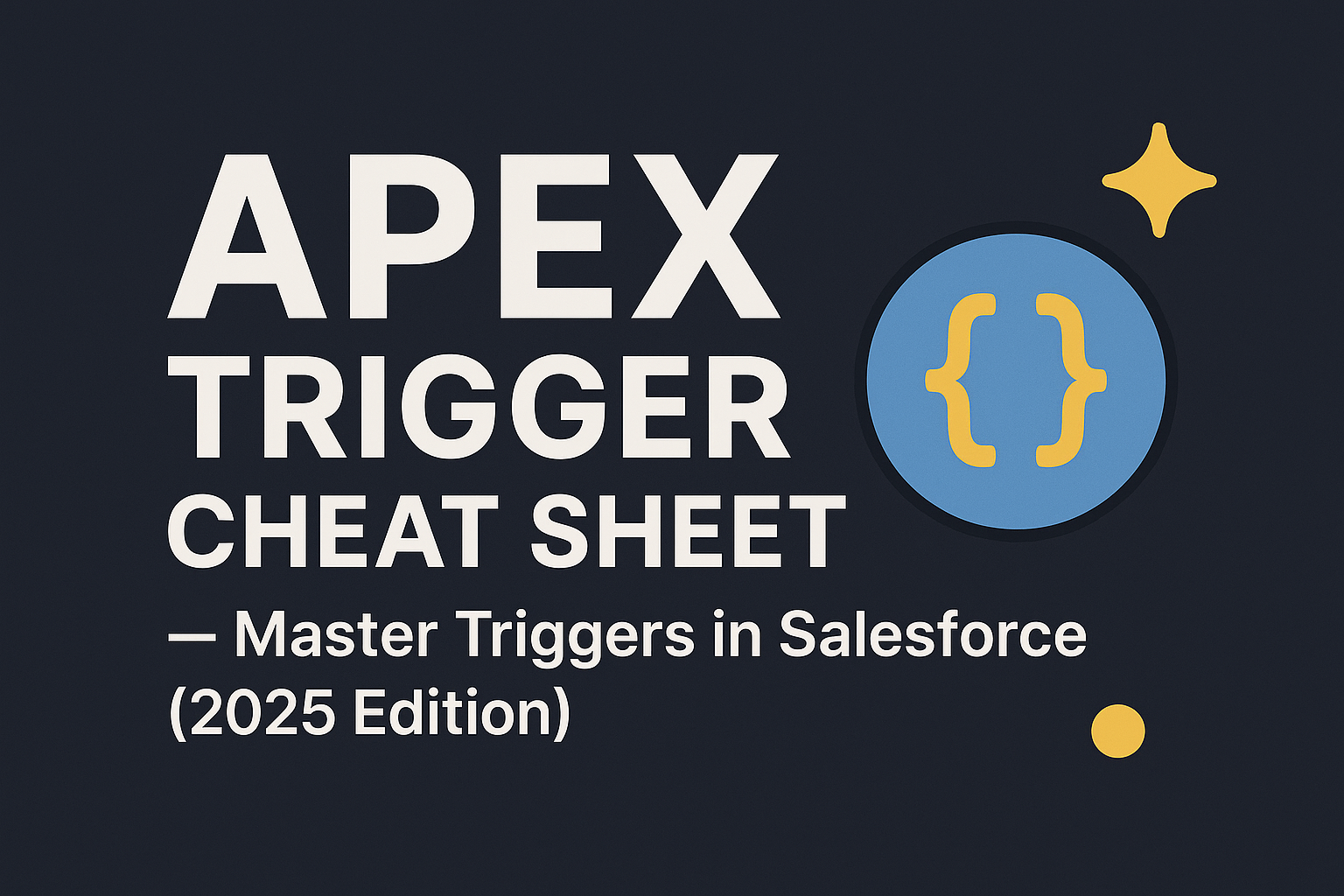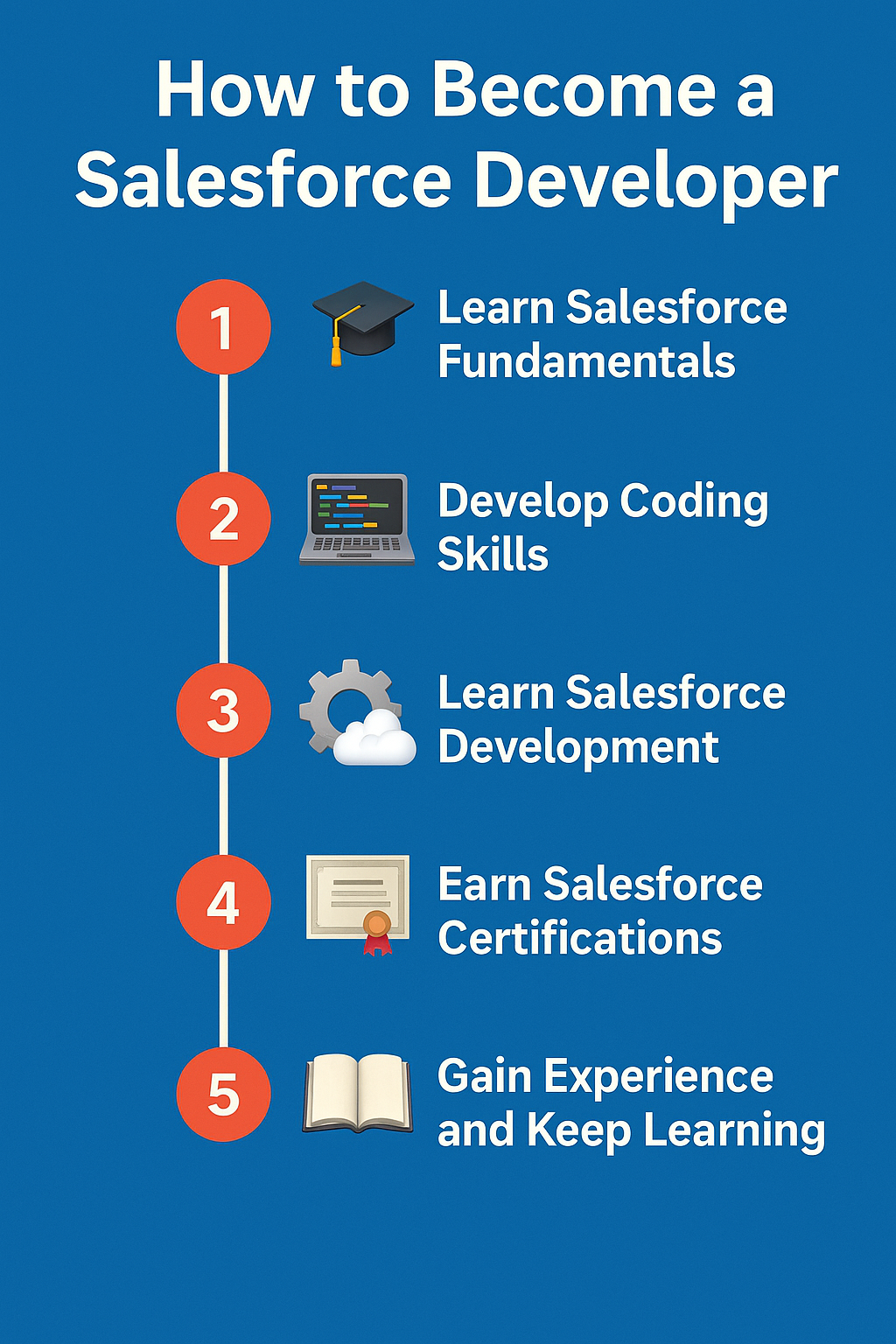Landing a Salesforce Admin role can be a game-changer for your career. As one of the most sought-after positions in the tech world, Salesforce Admins are the backbone of any Salesforce-powered organization. Whether you’re a seasoned professional or just starting your journey in the Salesforce ecosystem, preparing for your interview is crucial. This list of top 50 interview questions is designed to help you understand the core concepts, best practices, and key responsibilities that a Salesforce Admin should master. From basic platform knowledge to advanced automation, these questions will equip you with the insights you need to impress your interviewer and secure your dream job.
51. How many look-up relationships can we create on one object? Ans. 25
52. How many Master-Detail relationships can we create on one object? Ans. A. 2 B. Reparenting is allowed
53. What is a self Relationship? Ans. Creating relationships between the same object ( look-up )
54. What is a roll-up summary? Ans. The roll-up summary field in Salesforce calculates values from a set of records. These fields are read-only, they cannot be edited
55. Functions of a roll-up summary field? Ans. A. Count B. Sum C. Min D. Max
56. Can we convert the look-up relationship to a master-detail relationship? Ans. Yes, open the object, look up the field, click on the change field type, and click on the allow reparenting checkbox.
57. In the case of a master-detail relationship, on the update of the master record can we update the field of the child by using the workflow rule? Ans. No
58. In the case of a master-detail relationship, on the update of the child record can we update the field of the parent record by using the workflow rule? Ans. Yes
59. A custom object contains some records, now my requirement is to create a field in this object with master-detail relationship? Ans. No, we cannot create a master-detail relationship, first, we need to create a lookup relationship and we need to convert it into a master-detail relationship.
60. What is lightning app builder? Ans. The Lightning App Builder is a point-and-click tool that allows users to create custom pages and apps for Salesforce without coding. It's a visual tool that lets you drag and drop components onto a page to create a custom user interface and customize the components' layout, branding, and behavior. You can use the Lightning App Builder to create: Single-page apps, Dashboard-style apps, Point apps, Custom record pages, and Custom home pages.
61. What is a compact layout? Ans. The compact layout is nothing but a highlight panel.
62. What is a formula field? Ans. The formula is a combination of operators & functions. It is a read-only field.
63. How many types of formula are there? Ans A. Simple B. Advanced (most used) One formula could be an input for another formula.
64. What is the difference between simple and advanced formula? Ans. In the simple formula, it shows the object fields based on the return type chosen and limited operators but in the advanced formula, it shows all the object fields and all the operators.
65. How many types of operators are there in Salesforce and what are they? Ans. There are 3 types of operators, They are: a.Math operator b.logical operator c.text operator
66. How many types of functions are there in Salesforce and what are they? Ans. There are 6 types of functions, they are: a.Date & Time functions b.Logical functions c.Math functions d.Text functions e.Summary functions f.Advanced functions
67. What is a cross-objective formula? Ans. The formula involved between two related objects is called a cross-objective formula and should be created on the child object so we will have the parent object data there.
68. How can I make the field as required? Ans. There are 2 ways, 1. page layouts, 2. validation rules
69. Can we push data from the backend when you make fields as required from the page layouts? Ans. Yes, we can push the data from the backend (dataloader, apex, etc…). Since we made it required from the metadata level the system accepts the invalid inputs from the backend. So we always need to use validation rules.
70. What is a field custom validation exception? Ans. If any record does not satisfy the validation rule, it throws the field custom validation exception.
71. How to bypass the Validation rule? Ans. Should mention in the formula criteria
72. Do validation rules help to identify duplicate values? Ans. No
73. For advanced formula what should we use? Ans. REGEXin Salesforce
74. What is a debug log? Ans. A Debug log records the database transactions, system processes, and errors while running the unit tests. We can keep it up to 24 hours.
75. Do standard validation rules go to the database? Ans. No, it works from the framework itself.
76. What are the tools you used in your project? Ans. Data loader, Sandbox, vs code, GitHub.
77. How many types of automation processes are there in Salesforce? Ans. Workflow, Process Builder, Lightning Flows, Triggers.
78. What is Automation Process? Ans. Without human interaction, the system will execute the work per the given criteria.
79. What is a workflow? Ans. Workflow is an automation process and it has 4 types of actions like 1. Create a task, 2. Email Alerts 3. Field update 4. Outbound message
80. What are the different evaluation criteria types in workflow rules? Ans A. Created B. Created & every time it's edited C. Created, and every time it's edited to meet criteria subsequently.
81. What are the types of workflow actions available? Ans A. Immediate B. Time-Dependent
82. What are the types of email templates? Ans A. Text B. HTML C. Custom D. Visualforce
83. What is the difference between workflow rule, process builder, flows, and trigger? Ans A. Workflow Rules: Workflow Rules are the simplest automation tool in Salesforce. They allow you to automatically perform actions like sending email alerts, updating fields, creating tasks, or sending outbound messages based on criteria that you define. Actions: 1. Field Update 2. Create a task 3. Outbound message 4. Email Alert Limitations: 1. Can only perform a limited set of actions 2. Cannot delete records B. Process Builder: Process Builder is a more advanced tool than Workflow Rules. It allows you to define a series of if/then logic statements that can perform multiple actions within a single process. It can handle more complex logic and can also call other processes, workflows, or even Apex code. Actions: 1. Everything workflow rules can do 2. Invoking flows 3. Invoking apex code 4. Posting to chatter 5. Updating related records 6. Calling other processes Limitations: 1. Limited to record changes or scheduled actions, can't be triggered by other events. C. Flows: Flows are the most powerful declarative automation tool in Salesforce. They can be used to build complex business processes with multiple steps, user inputs, and decisions. Flows can run in various contexts: they can be triggered by record changes, scheduled, or invoked by other processes. Actions: 1. Everything process builder can do 2. Perform complex logic 3. Create, update, and delete records 4. Get or manipulate records using SOQL. 5. Call apex code 6. Loop through records 7. Use decision elements for branching logic D. Triggers: Triggers are Apex codes that execute before or after certain DML (Data Manipulation Language) events like insert, update, delete, or undelete operations on a Salesforce object. They provide the highest level of flexibility and power, allowing you to write custom code to handle complex scenarios that declarative tools like Workflow Rules, Process Builder, or Flows cannot handle. Actions: 1. Execute any apex code 2. Execute complex calculations or data manipulations 3. Integrate with external systems
84. What is the difference between workflow and process builder? Ans. Workflow can only apply to a single object but the process builder can work on 2 objects at a time like related objects.
85. What are the types of flows? Ans. There are many types of flows but the most recommended flows are: 1. Screen Flow 2. Record Triggered flow 3. Scheduled triggered flow 4. Platform event triggered flow 5. Auto launched flow 6. Record triggered orchestration
86. What are the elements we are having in the flows? Ans A. Interactions B. Logic C. Data
87. In how many ways can we launch screen flow? Ans A. Embedding in a lightning record page B. Launching from a custom action C. Embedding in a lightning web component D. Launching from a custom button or link. E. Launching from a URL.
88. What is the variable value to store record id in flows? Ans. recordId (text)
89. What is a record-triggered flow? Ans. Record-triggered flow comes into the picture when the record is created, updated, or deleted and it runs in the background.
90. What is the difference between fast field updates and Actions & related records in record-triggered flow? Ans. If you want to update the fields on the object in which you are writing the record-triggered flow, choose fast field updates & when you want to update the child records, choose action & related records.
91. Can we run the record-triggered flow in the flow builder? Ans. No
92. Will the process builder create multiple records? Ans. No
93. Can a process builder launch the flow? Ans. Yes, but only auto-launched flow.
94. Can we call subflow in record triggered flow when we select fast field update? Ans. No
95. Can we call screen flow from another screen flow? Ans. Yes
96. Can we call a screen flow from record-triggered flow? Ans. No, because record-triggered flow is a background process and screen flow is a frontend process.
97. Can we call autolanched flow from a record-triggered flow? Ans. Yes.
98. Can we call record-triggered flow from screen flow? Ans. Yes
99. What is the time interval of schedule-triggered flow? Ans. 15 minutes
100. Where do we monitor scheduled-triggered flow? Ans. At scheduled jobs section.






